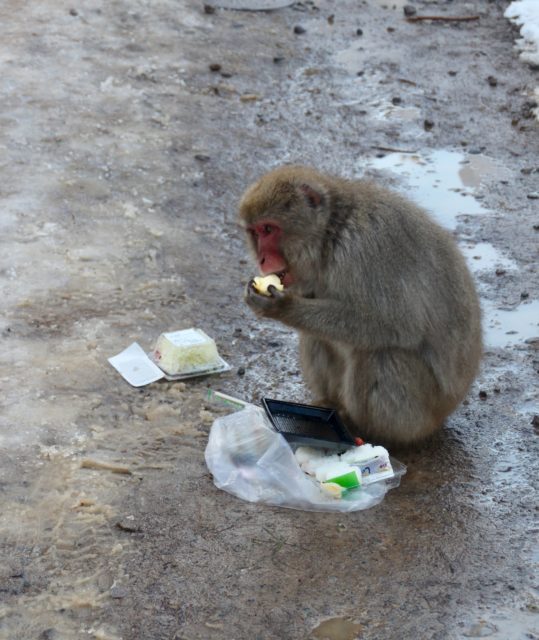19 February 2017
Let the search for snow monkeys begin! If you’ve ever researched travel in Japan, chances are you happened upon the iconic photos of beautiful red-faced primates soaking in some steamy, snowy hot springs. For years I knew that if I ever made it to Japan, I wanted to seek out this gorgeous scene for myself. Well, last week I finally did, and it was pretty incredible. Here’s a little bit about my experience at the Snow Monkey Park, and how you can make the journey for yourself.
We caught a morning bus from Nagano station bound for Yudanaka. Combination Snow Monkey Park pass and round trip bus ticket are available on the basement level of the Nagano Station. Purchasing the duo ticket here will save you about 200yen, as opposed to buying them separately. Buses bound for the Jigokudani Yaenkoen (Snow Monkey Park) depart from the east side of Nagano Station (platform #23) leaving at least once every hour. The ride takes about 35-45
minutes. The bus will drop you next to the Shiga Kogen Roman Museum, from which it is a ten minute walk to the trail head.
If you’re traveling during the winter months, you’re going to want to bundle up. Temperatures were just above freezing when we went mid-February, and the trek to the iconic monkey hot springs takes over half an hour. Proper snow shoes or hiking boots with good traction are also recommended. If you don’t have proper snow shoes, you can rent snow boots at the Snow Monkey Resorts Info and Gift Shop at the trail head for 800yen, or crampons for 1350yen.
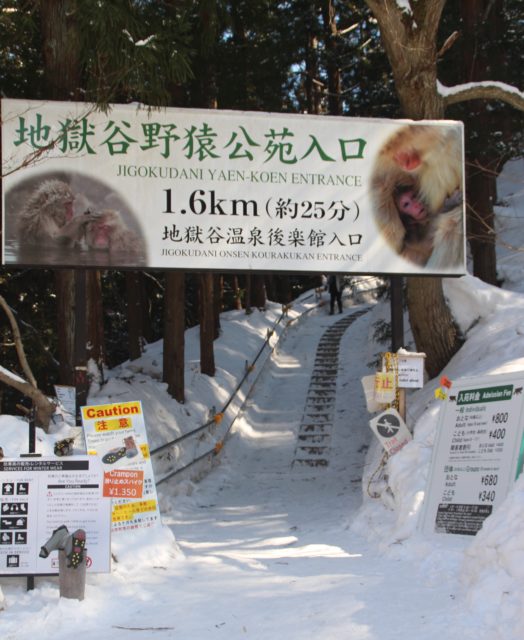
The trail to the park entrance is carved into the hillside, and winds through stunning cedar forest. Several signs along the path provide facts about the Japanese macaque (Macaca fuscata) while also letting you know how far you have left to walk.
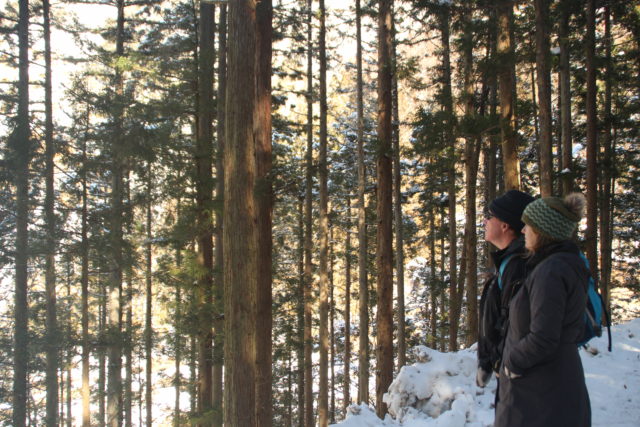
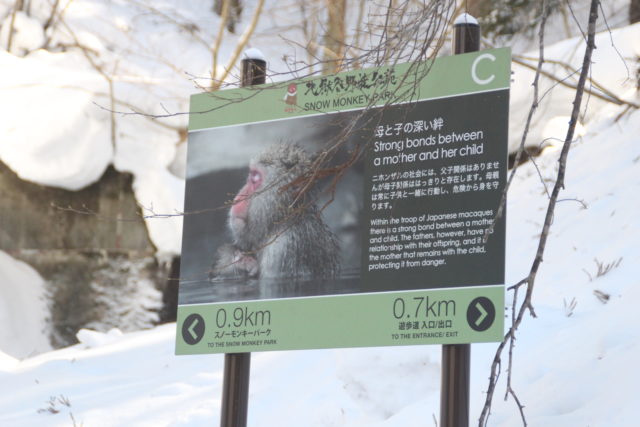
Always appreciated, especially if you have little monkeys of your own in tow.
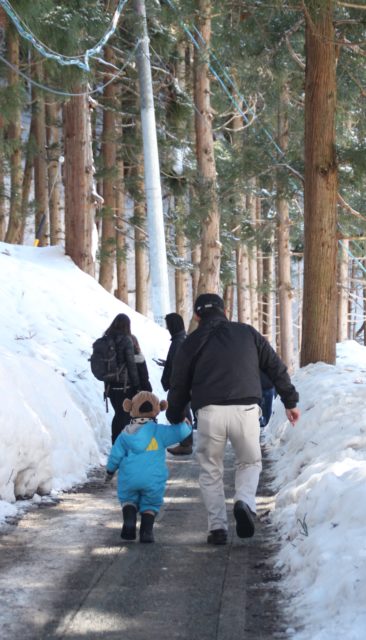
At the end of the trail, the forest will part, and you’ll enter a small stream carved valley in which a ryokan (traditional Japanese inn) is nestled.
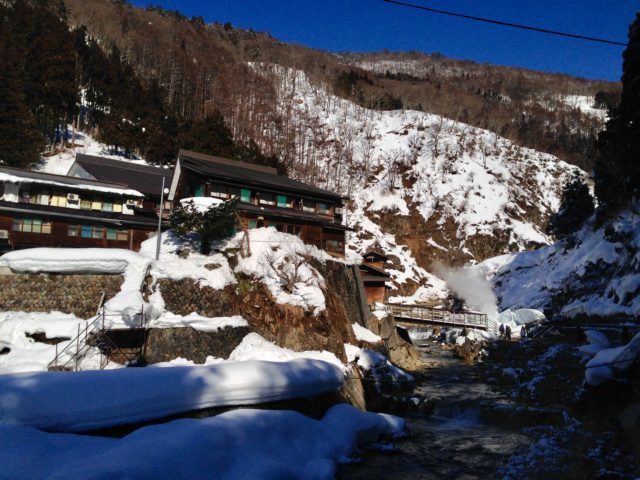
To enter the official Snow Monkey Park, stay to the right hand side of the pathway, ignoring the bridge to the ryokan to your left. Just before the path ends, you’ll see a steep stairway to your right with a sign welcoming you to Jigokudani Yaenkoen. Make the final assent and you’re there!
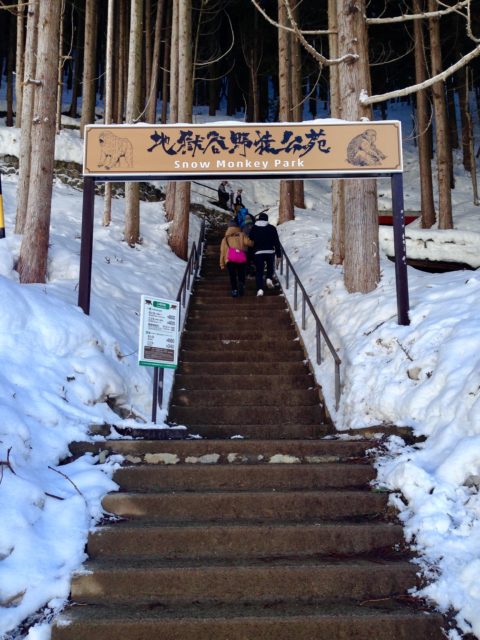
The lodge at the top of the hill marks the entrance to the park. If you haven’t yet purchased a park pass, do so at the ticket counter at the lodge entrance. Follow the signs guiding you around the lodge, and behold a valley of monkeys! Well, hopefully they will be there, the monkeys are wild so whether or not they hang around is entirely up to them.
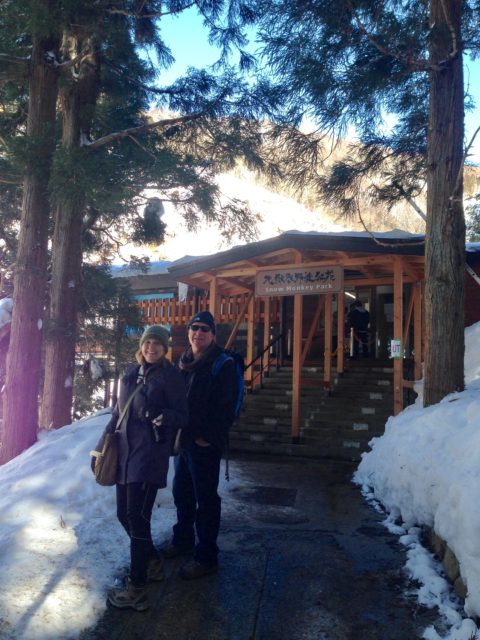
We arrived on a good day. There must have been at least a hundred monkeys of all ages engaging in all manner of social behavior. Juvenile monkeys chasing each other, and rolling around in the snow. Mama monkeys nursing babies clutched to their breasts. Monkeys laid out waiting to be groomed. Monkeys chasing each other up trees, while others dug for grub in the snow. Ironically, the one thing we didn’t see were monkeys soaking in the hot spring. They also didn’t seem to care that dozens of people were hanging out around them. They just continued on with whatever they were doing, occasionally shooting contemptuous glances at nearby photographers.
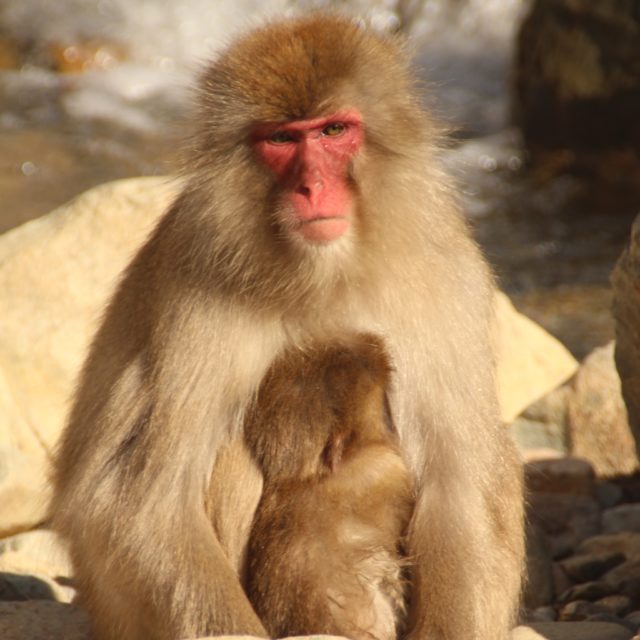
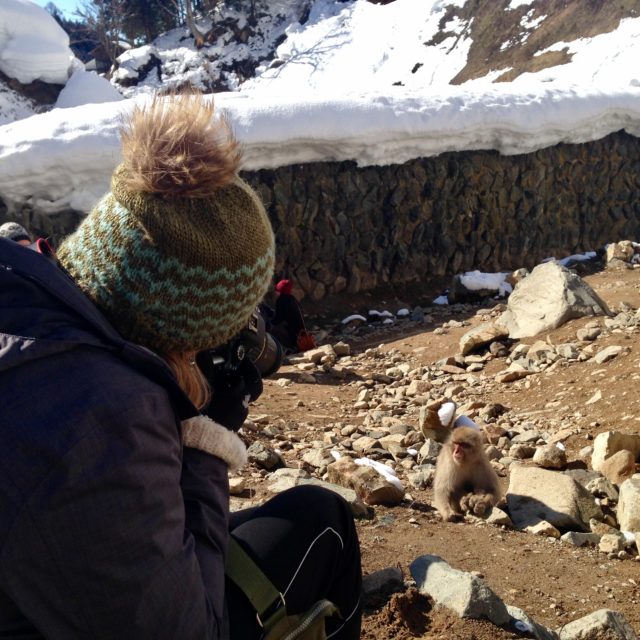
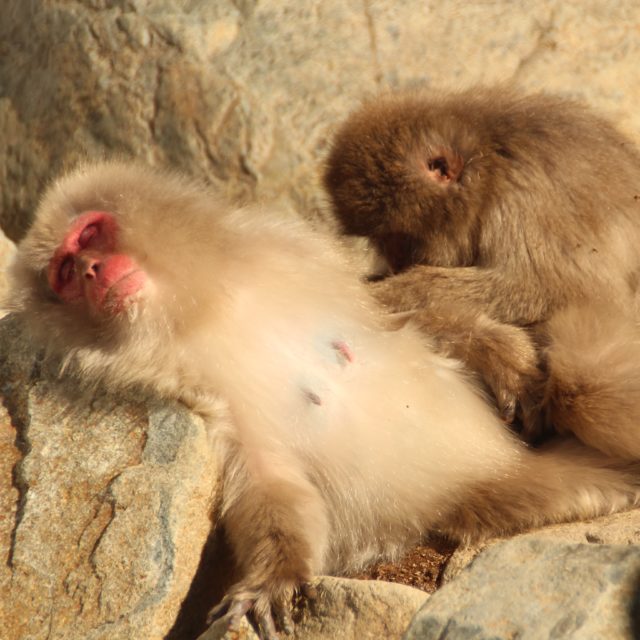
I was surprised to find that the hot spring within the park was not naturally formed. It is a man made hot spring which naturally heated water from a nearby source is funneled into. According to the Snow Monkey Resort, it was built to deter the snow monkeys from using the baths at the ryokan just down the way. Give them their own bath, and they won’t bother the hotel guests right? Not quite… we saw quite a few monkeys sharing the ryokan’s onsen with a young man on our way into the park. Just as the monkeys didn’t seem to mind all the visitors staring, nor did he seem to mind how public his bath was. But then again, why should he? He clearly had nothing to be ashamed of.
Final thoughts? I loved the Snow Monkey Park. Beautiful walk plus getting to observe these amazingly expressive and impressive animals in a wild setting, yes please. You could argue that while the monkeys are not in captivity, they are likely inclined to hang around because the park staff feed them barley on a regular basis. I’m not versed on the ecology of Japanese macaques, so couldn’t say how much such actions impact their natural life history. However, I did leave with a positive impression of management efforts within the park and the experience as a whole. The only negative commentary I have is directed towards the inconsiderate visitors that ignored all instruction and fed the snow monkeys that were waiting outside of the park entrance. Not only are they leaving trash in an otherwise pristine natural setting, I’m pretty sure bento is not a natural component of Japanese macaque diet.
